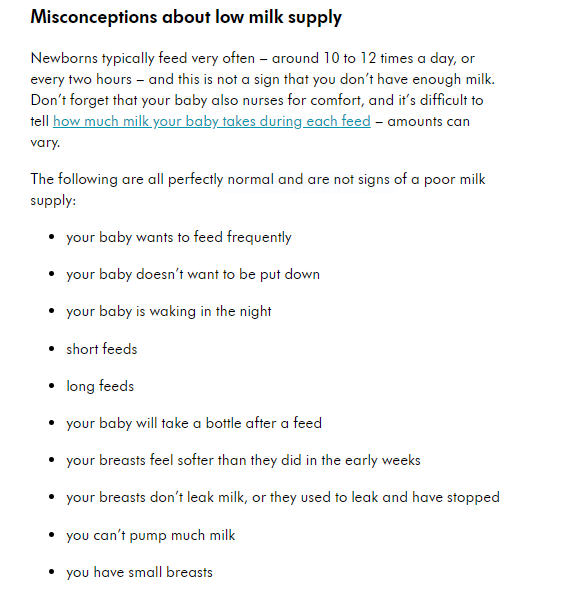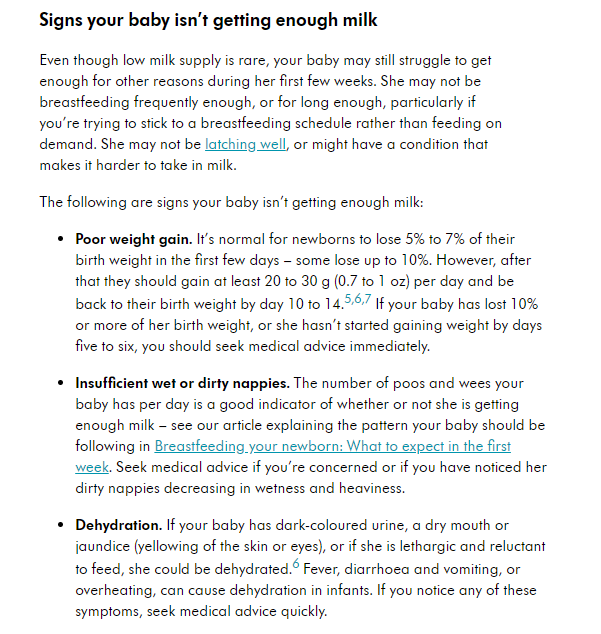
Tips for a beautiful and successful breastfeeding journey! Don't give up yet, Mama..
For some women, breastfeeding comes as naturally as breathing. For other women, breastfeeding is nothing but a tumultuous experience consumed by pain, tears and frustration, leaving them feeling like a failure. If you fall into the latter category, you are NOT alone!
There are various reasons why breastfeeding can be a struggle for women, resulting in them converting to formula feeding. It's a no-brainer, right? Your baby's born, you struggle to breastfeed, you worry your baby isn't getting enough nutrients and you switch to formula! But sometimes we give up too soon.. Success is often RIGHT around the corner, but most people give up just before that corner arrives.
If you are set on breastfeeding but are struggling to get your baby to latch or worried you aren't producing enough breastmilk, we urge you to read further, and don't give up just yet! Here are some tips for the Mamas who have had a hard time with breastfeeding BUT are looking for ways to improve their experience and transform struggle to success..
BE PATIENT WITH YOUR MILK FLOW
How long were you told it would take after birth until your milk came in? This is an important aspect to take into consideration. Too many women are under the impression that the milk is supposed to come in instantly after giving birth. This can't be further from the truth! It's totally normal for breastmilk to start flowing a number of days after giving birth.
You produce colostrum (yellowish, first form of milk produced by the mammary glands of mammals immediately following delivery of the newborn) for between 3 - 5 days postpartum. While producing colostrum, you're unlikely to see a substantial flow, but don't be fooled, your baby is getting everything they need! Many new mothers freak out because they're under the impression that their baby isn't receiving enough nutrients at this point, but rest assured, colostrum in densely concentrated with nutrients and essential goodness!
Feeding your baby frequently, and even expressing in between feeds, will encourage your transitional milk to come in sooner. The more your mammary glands are stimulated, the more they produce. We recommend that you express/pump a half hour after a feed and every half hour thereafter – this will ‘trick’ the body into supplying milk more often – as nature has equipped the body to produce and replace the amount of milk your baby has taken (allowing you to store extra). Let your baby breastfeed on demand as often as he/she wants. Follow your baby’s lead - as breasts work on the law of supply and demand.
Your transitional milk generally lasts until ten to fourteen days after birth, and this is the period where you'll experience the most engorgement and pain (more on that later). In most women, mature milk only begins to appear near the end of the second week after childbirth. This is when your milk flow really starts to be produced in larger volumes. Your breast will then start to soften again.
Common misconceptions about low milk supply (www.medela.com):
Signs to look out for, telling you that your baby isn't getting enough milk (www.medela.com):
If you suspect that your little gem is not getting enough milk, consult with a lactation specialist or your midwife. They will be able to examine your baby, see how you've been feeding and how the baby latches on. You can also try Nature's Milk Drops, a safe and natural herbal remedy that promotes a healthy flow and production of breast milk!
Remember to keep healthy – as whatever mom eats and drinks – baby gets via breast milk too! It's a good idea to take a daily multivitamin and mineral supplement to make sure that you, and baby, get all the necessary nutrients. We recommend Solgar PreNatal Nutrients, which can be taken all the way through pregnancy and during the breastfeeding period.
THE PAIN DOESN'T LAST FOREVER
The first few weeks of breastfeeding are undoubtedly the most difficult. You know how your breasts and nipples get super sensitive, painful or uncomfortable just before you get your period? Or think about the breast pain in the first month of your pregnancy.. Now, times that by about 100!
With all the hormones rushing around your body after you've given birth, your breasts naturally take a toll. Don't forget about all the physiological changes happening specifically in your breasts as the mammary glands begin working hard at supplying your baby with milk! As your milk supply increases, your breasts become engorged - which in turn, adds to the painful experience and your baby may even struggle to latch on properly due to the enlargement! Your nipples become distorted, cracked and may even bleed. Your entire chest feels like it's as hot as a volcano that could erupt any second.
...And many women sadly give up at this point. Yes, it is unbearable! Yes, it is unfair!! Yes, formula feeding does sound SO much better! But right around the corner, after a bit of patience and perseverance, it gets better.
A lot of women's breastfeeding pain occurs due to a poor latch. Suckling should not cause you pain otherwise it's likely your baby is not latching correctly. Consult a breastfeeding specialist or midwife to show you the best way to hold your baby, how to position their head and what you can do to get him/her to latch properly. If your baby is struggling to latch correctly due to engorgement, there are various methods you can use (such as feeding frequently, expressing/pumping between feeds, applying heat and cold alternately) to manage engorgement.
If your nipples become chapped, dry and painful, avoid using nipple creams that contain lanolin. While lanolin-based creams ARE effective in soothing and moisturising dry skin, lanolin contains a heavy load of pesticides, which will be going directly into your gem's mouth when they feed! Instead, use a Calendula Nipple Balm or Colloidal Silver Cream that naturally soothes, heals, moisturises and protects. It's safe for babies, is vegan-friendly and doesn't contain any artificial preservatives!
Once your hormones have settled down, your breasts have gone back to 'normal' and your baby has gotten the hang of latching, you'll be proud that you pushed through this painful time. Your baby will surely be happy, too!
Note: a condition called mastitis can sometimes occur, when engorgement or a poorly flowing milk duct can lead to an area of your breast becoming inflamed. Redness, swelling and pain can occur in the affected area but usually goes away after a couple of days of perseverance, frequent feeding and expressing/pumping in between feeds. If it does not resolve within a week, see your doctor for treatment. In more serious cases, infection can set in with mastitis.
STICKING TO A FEEDING SCHEDULE MAY NOT BE THE BEST THING TO DO
Doctors, gynecologists and midwives will often advise new moms to feed their new baby between 8 and 12 times per day. While this can be used as rule of thumb, each baby is different! Feeding on demand, on the other hand, means feeding your baby whenever they signal that they're hungry, rather than according to a set schedule. Sometimes they just want to latch on for some bonding time!
Feeding your baby on demand also allows your body to regulate the amount of milk that your baby needs. Remember, breasts work on the law of supply and demand! If you're sticking to a feeding schedule, your body isn't allowed to properly synchronize with what your baby needs, and you may end up not producing enough milk for him/her. However, babies that are born underweight or too early, may be weak or sleepy and not wake up enough for feeds. In these circumstances, you'd have to wake them for a feed.
SPEND AS MUCH SKIN-TO-SKIN TIME WITH YOUR GEM AS YOU CAN
Skin-to-skin contact is one of the BEST things you can do for your newborn! Holding your baby against your bare chest with baby wearing only a diaper, allows for intimate contact between mother and child. This special and powerful action drastically lowers stress levels in both mother and child. It also strengthens the bond between mother and child in an amazing way.
The first hour after your baby is born is known as 'the golden hour', where it's recommended that the baby is immediately placed with the mother, skin-to-skin. This golden hour should be undisturbed for the best results and maximised bonding. During this hour is also where the first breastfeeding experience will happen. The more peaceful, stress-free and intimate this time is, the better the first feeding session will be (which sets a precedent).
Studies have shown that skin-to-skin contact not only improves the emotional bond between mother and child, but improves the breastfeeding experience. Your body will produce more milk, your baby will feed better, and everyone will be happy! Play some soft, soothing music during this first hour. Dim the lights. Make it 'romantic'.
If you would like to speak to one of our passionate team members, please contact us for FREE advice. We would love to assist you on your pregnancy, birthing and breastfeeding journey!





Leave a comment